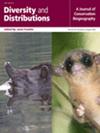A Framework for Assessing the Habitat Correlates of Spatially Explicit Population Trends
Abstract
Aim
Halting widespread biodiversity loss will require detailed information on species' trends and the habitat conditions correlated with population declines. However, constraints on conventional monitoring programs and commonplace approaches for trend estimation can make it difficult to obtain such information across species' ranges. Here, we demonstrate how recent developments in machine learning and model interpretation, combined with data sources derived from participatory science, enable landscape-scale inferences on the habitat correlates of population trends across broad spatial extents.
Location
Worldwide, with a case study in the western United States.
Methods
We used interpretable machine learning to understand the relationships between land cover and spatially explicit bird population trends. Using a case study with three passerine birds in the western U.S. and spatially explicit trends derived from eBird data, we explore the potential impacts of simulated land cover modification while evaluating potential co-benefits among species.
Results
Our analysis revealed complex, non-linear relationships between land cover variables and species' population trends as well as substantial interspecific variation in those relationships. Areas with the most positive impacts from a simulated land cover modification overlapped for two species, but these changes had little effect on the third species.
Main Conclusions
This framework can help conservation practitioners identify important relationships between species trends and habitat while also highlighting areas where potential modifications to the landscape could bring the biggest benefits. The analysis is transferable to hundreds of species worldwide with spatially explicit trend estimates, allowing inference across multiple species at scales that are tractable for management to combat species declines.


 求助内容:
求助内容: 应助结果提醒方式:
应助结果提醒方式:


